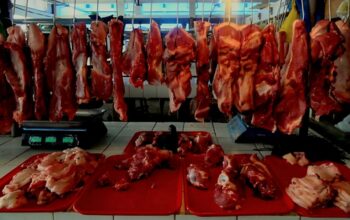PANGLAO, Bohol – The Philippines’ salt making dwindles to 7% of the salt requirement, according to the presentation of Cherry E. Romero, focal person of the Development of Salt Industry of the Philippines (DSIP) during the recent 7th Farm Tourism convention held here.
“Despite the huge potential of the salt industry, this once a vibrant undertaking dwindled to the brink of extinction,” it said.
In the 1980s, the country produced some 85% of salt requirement supplied mainly by Pangasinan, Bulacan, Cavite and Occidental Mindoro.
The country has imported some 550,000 metric tons of salt, or about 93% in 2020 based on the data of the Philippine Chamber of Agriculture and Food, Inc.
The country’s annual requirement is about 683,000 MT.
In 2022, the salt supply is only some 89,673.8 MT, or 13.13%, of the requirement. This is supplied by Occidental Mindoro, 58.54%; Pangasinan, 32%; Misamis Oriental, 1.14%; West Visayas, 3.3%; Ilocos region, 1.22%; and the rest from Central Luzon, Calabarzon, region 7 and Catanduanes.
Romero said that the DSIP and government intervened to save the industry to revitalize it thru inputs, extension services and profiling of the industry and conduct value-chain analysis.
Recently, President Ferdinand Marcos Jr. has signed Republic Act No. 11985, or the Philippine Salt Industry Development Act, into law in a bid to revive the industry.
“It is further the policy of the State to preserve, protect, and rehabilitate the natural environment in the actualization of its developmental policies,” the law said.
The said law is in accordance with the Republic Act No. 8172, “An Act for Salt Iodization Nationwide (ASIN).
This year’s theme, “Farm Tourism: Consciousness for Healthy Living and New Experiences,” aims to showcase and share best practices and attempts to providing social and economic benefits to communities. (rvo)



